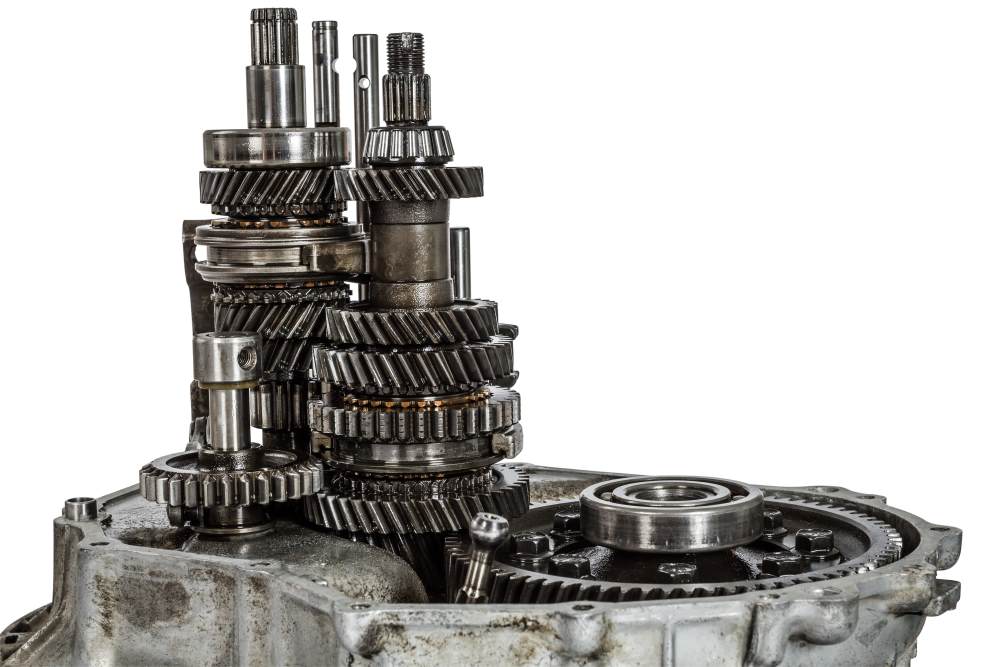
What is a Motorcycle Transmission: Working, Parts and Types

The motorcycle transmission stands as the unsung hero orchestrating the dance of power. It is the intricate mechanism that translates the raw force generated by the engine into the seamless motion of the wheels, defining the very essence of a rider's experience.
It is crucial to know its parts, its functioning, its types and the problems one can face with motorcycle transmission gears.
What is a Motorcycle Transmission?
A motorcycle transmission is a critical component that facilitates the transfer of power from the engine to the wheels.
Motorcycles predominantly feature manual transmissions, allowing riders more control over gear selection. Some recent models may integrate automatic transmissions for convenience, but manual transmissions remain the standard.
What are the Parts of Motorcycle Transmission?

There are following ten main parts of a motorcycle transmission, which are crucial for bikers to understand for maintenance:
- Bearing: Bearings are placed within the transmission, supporting rotating shafts and reducing friction. They ensure smooth operation and longevity of the system.
- Main Shaft: It is also known as the input shaft, which transmits power from the engine to the gears. It plays a central role in determining the rotational speed of the gears.
- Counter Shaft: It is connected to the main shaft and rotates at different speeds. It allows for gear reduction, influencing the final output speed of the motorcycle.
- Gears: They are categorised into fixed, freewheeling, and slider types. Fixed gears are directly connected to the shaft, freewheeling gears spin freely, and slider gears engage or disengage as needed.
- Shift Fork: The shift fork is responsible for moving gears along the shaft, enabling the rider to shift between different gears seamlessly.
- Shift Drum: The shift drum, a cylindrical component, orchestrates the movement of shift forks. Its design ensures precise gear engagement.
- Shift Linkage: Shift linkage consists of mechanical components that connect the shift lever to the shift drum, facilitating gear changes.
- Chains: Chains transmit power from the transmission to the rear wheel. Proper tension and lubrication are crucial for optimal performance.
- Sprockets: Sprockets are toothed wheels that mesh with the chains, translating the rotary motion of the transmission into the linear motion of the wheels.
- Drive Belts: Some motorcycles employ drive belts instead of chains. Belts offer quieter operation and require less maintenance than traditional chain systems.
3 Types of Motorcycle Transmission
Motorcycle transmissions come in different types, each offering a unique riding experience, types include:
- Manual Motorcycle Transmission: Manual Motorcycle Transmission is a favorite among everyday bikers. It lets riders manually pick and change gears using a movable gear selector or a clutch operated by the rider's hand or foot. This gives riders the freedom to control their bike's gears according to their preferences.
- Semi-Automatic Motorcycle Transmission: In a semi-automatic transmission, you manually shift gears without using a clutch, as the transmission automatically manages the clutch operation for smoother gear changes. It combines the ease of automatic shifting with some control retained by the driver.
- Automatic Motorcycle Transmission: Motorcycles with automatic transmission smoothly switch between gears without a visible signal. Despite having an automatic system, these bikes usually include a clutch to assist the engine during idle or when manually reversing. This is the least popular choice among riders.
How Does a Motorcycle Transmission Work?
The process of understanding the inner workings of motorcycle transmissions is key to understanding their functionality, here are the steps:
- Step 1: The clutch sends engine power to the transmission main shaft.
- Step 2: A fixed gear spins at the same speed as the main shaft.
- Step 3: The freewheeling gear is always connected to the fixed gear.
- Step 4: Slider gear engages the freewheeling gear, making the countershaft spin.
- Step 5: The rider shifts gears up or down using the left foot gear lever.
- Step 6: The gear lever is linked to a shifter shaft connected to a ratchet mechanism.
- Step 7: The ratchet mechanism activates, causing the drum to rotate.
- Step 8: Shift forks with pins in drum channels and move the gears.
- Step 9: Gears with pegs called pin gears fit into recesses on adjacent sprockets.
- Step 10: Sliding neighbouring gears together locks them, making them rotate as one.
What are the Problems with Motorcycle Transmissions?
Despite their robust design, motorcycle transmissions can face several issues, out of which eight common problems are as follows:
- Clunking Noises: Unusual clunking sounds may indicate worn gears or improperly adjusted components. Timely inspection is crucial to prevent further damage.
- Jumping out of Gear: Gears unexpectedly disengaging during operation suggest a malfunctioning shift fork or damaged gear teeth. Professional attention is necessary.
- Hard Shifting: It is often caused by a misadjusted clutch or worn-out gears can lead to transmission damage. Regular maintenance is vital to prevent this issue.
- Delayed Acceleration: A lag in acceleration might result from slipping clutches or a malfunctioning transmission. Identifying and rectifying the root cause is imperative.
- Damaged Gearbox: External factors like accidents or impacts can damage the gearbox and transmission. It requires immediate professional attention.
- Chain Tension: Incorrect chain tension can lead to transmission issues and premature wear. Regular adjustments are necessary to maintain proper tension.
- Difficulty Finding Neutral: This may be due to a misadjusted clutch, worn-out shift forks, or other internal problems. Proper maintenance can resolve this issue.
- Contaminated Engine Oil: Contaminated engine oil can adversely affect the transmission's performance. Regular oil changing is crucial for longevity.
The motorcycle transmission is a finely tuned mechanism that translates engine power into exhilarating rides. Understanding its components, operation, and issues empowers riders to troubleshoot effectively, ensuring a smooth journey on a motorcycle.
Regular maintenance and prompt attention to any transmission issues are the keys to a reliable and high-performing motorcycle.











 Continue with
Continue with





